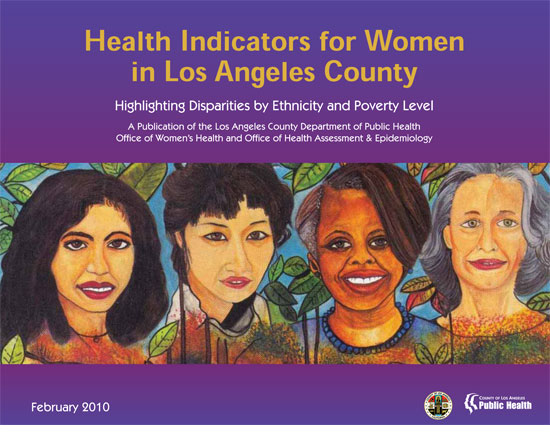Mixed outlook for L.A. women’s health
March 4, 2010
Women in all parts of Los Angeles County are getting more obese and their diabetes rates are rising, according to a new report that examines female health patterns and behaviors across the county. And significant numbers of women are failing to get enough exercise—especially those over 40.
Despite those troubling trends, however, the overall mortality rate for women has improved, according to the study, “Health Indicators for Women in Los Angeles County,” the second of its kind prepared by the Department of Public Health.
True to its subtitle, “Highlighting Disparities by Ethnicity and Poverty Level,” the report also calls attention to a series of thought-provoking findings about the state of women’s health in the county.
The most disturbing is the finding that African-American women are dying far more frequently from many common chronic diseases. White women have a higher incidence of breast cancer, but blacks are more likely to die from it. Black women also smoke more and face higher rates of communicable diseases and exposure to violence. Yet they report better access to health care, and rate their own health higher than do other groups. Researchers say that poses a quandary that will require more study of the potential health impact of social factors like discrimination and stress.
Overall, the leading cause of death among all women remains coronary disease, followed by stroke.
“It still startled me to see such high mortality rates for African American women,” said Dr. Rita Singhal, medical director of the county’s Office of Women’s Health, who spearheaded the study as well as the previous report in 2007. “What are those hidden factors that are contributing to this disparity?”
Singhal also noted that the current report draws from a number of sources, including data collected as part of the county health survey, which was conducted in 2007—“right before the economic downturn.”
At the time covered in the report, 21% of women did not have health insurance—a number that is likely to have grown. The correlation with preventive health care was clear: these women were less likely to have had a recent mammogram or Pap test than those with insurance.
Singhal also pointed out that some of the positive findings in the report, including good access to prenatal care and contraceptives, may be eroded because of cuts to government funded health programs.
The next survey will draw on data taken this year, and is expected to be published in two to three years.
Posted 3/4/10













 405 bridge work causes a stink
405 bridge work causes a stink
